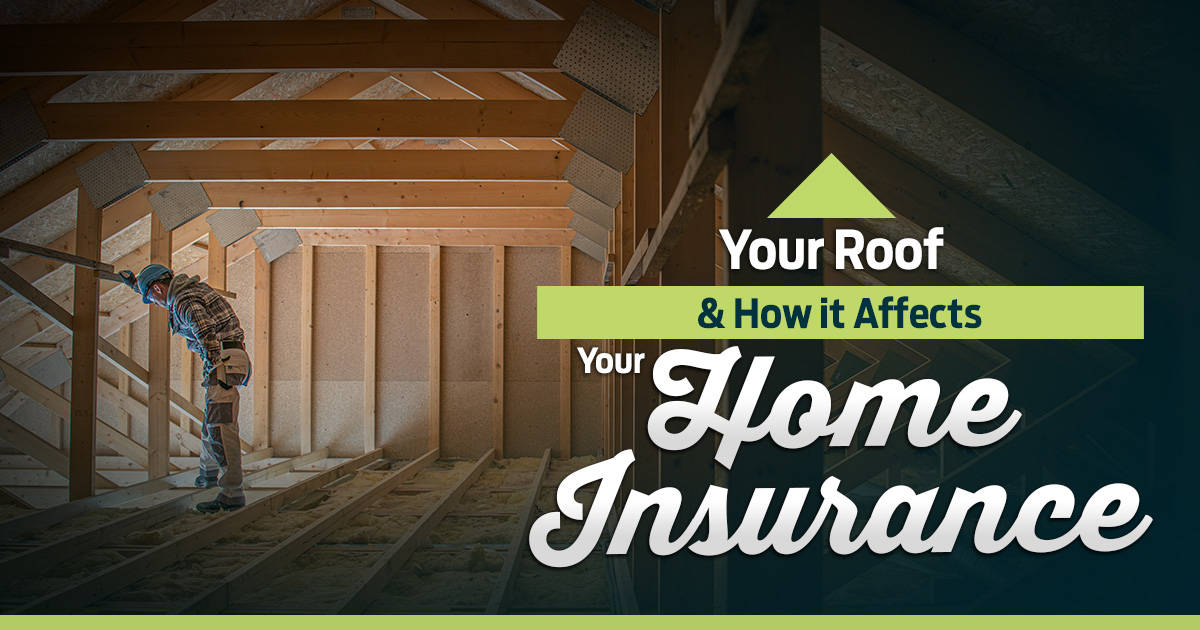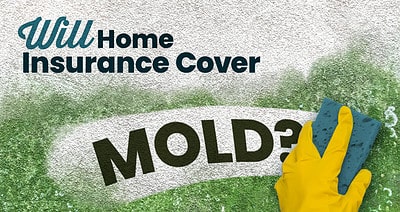
Your Roof & How it Affects Your Home Insurance Premiums
November 9, 2022
Share:
If you already know the basics of how your home insurance premiums boil down, you’re probably already aware that there are a lot of factors contributing to the overall cost you will pay. Did you know that your roof is one of many factors that affect your home insurance premiums? Your roof – essentially your home’s first defense against the elements – is one of the largest considerations when insurers are examining the make, age, and structure of your home. It may even come up in your quoting form.
Basically, your home insurance premiums are calculated to reflect the overall risk you face. The more likely you are to make a claim, the higher your insurance premiums will be. Factors that insurance providers will take into consideration include the make and model of your home, especially its age, the condition of all its systems, liability features like swimming pools and wood-burning fireplaces, its location and proximity to fire stations or large bodies of water, and so forth. Insurance carriers will also take into account factors like your personal insurance history, and folks with a large number of claims in recent history will likely be looking at much higher premiums in the future.
Why is your roof important to insurance providers?
Your roof is important to home insurance providers – specifically what type of roof it is, how old it is, and what condition it is in – because your roof is essentially your home’s most important safety feature. If your roof is damaged or near the end of its lifespan, it is no longer effective in protecting your home and may lead to further damage in other parts of your property. Roofs can be constructed from all types of materials, and every different roof may have a different lifespan. It is also important as to where you live. Areas that see large fluctuations in temperature or often have extreme weather events may need to repair or replace their roofs more often.
Which roof is the cheapest to insure?
Your roofing materials are the most important factor, besides age, that will allow you to reduce your rates considerably. There are plenty of options for roof materials, from your common asphalt shingles to durable metal paneling. We’ll break down a few of them for you.
Asphalt shingles are the most common roofing type, especially in Ontario. They are affordable and can withstand up to 20 years before they need to be replaced. Unfortunately, asphalt can decay quicker than other materials.
Slate shingles can be a popular choice and, while more expensive than asphalt, can be more fire-resistant, offer better insulation, and are more resistant to infestation.
Clay and cement tiles are much heavier and generally far more expensive than asphalt or slate. They may not stand up to colder temperatures and require a sound roof structure to even be installed.
Finally, metal roofing is generally the most durable option and is fire-resistant. It can be more expensive than some other roofing options, but there is a good chance you can ask about an insurance discount with your provider if you have a metal roof installed or are thinking about getting one.
When is the best time to replace my roof?
An aging roof is no good at protecting your home against the elements. Depending on your roofing materials, your roof only has a certain lifespan for which it can withstand certain damages. That lifespan can be shortened depending on the type of weather it has seen over the years. Say, for instance, you had an asphalt roof. Around the 15-20 year mark, you might want to consider hiring a professional roofer to do an inspection for you and get a good look at your roof to determine whether it warrants a few small repairs or a total replacement. In some cases, you can save on cost by installing your new roof over the existing one. In other situations, you may have to tear up the old material altogether. Always inform your broker before making any home renovations.
The best time to replace your roof is situational. If your roof is starting to show signs of age, like wearing, chipped shingles, water damage, mould, etc., it may be time to get an inspection done to determine what the next course of action is. A newer roof may make you eligible for a discount on your insurance premiums. Also, consider hiring a professional roofer! Ontario.ca has its own guide on how to hire a roofer. A professional roofer may not scam you or perform shoddy workmanship on your new roof.
Is damage to my roof covered by my home insurance?
Most of the time, yes. So long as the damage was due to an insurable peril, then it should be covered by your home insurance. If your roof sustained damages due to neglect, a lack of maintenance, wear and tear, or infestation, it probably will not be covered.
You, as the homeowner, are expected to care for your roof just as you would any other aspect of your home. If your roof is in poor repair and in desperate need of repairs and maintenance, you may not even be able to get insured at all. A prospective home insurance company will likely require you to repair or replace the roof before they agree to insure you. If you need to get home insurance with a roof that is in poor repair, you’ll likely need to narrow your search and may have to secure limited coverage.
If you were a tenant and the roof of your rental home was damaged, it would be your landlord’s responsibility to fix the issue. Your tenant insurance may, however, cover you for any consequential damages to your property.
Conclusion –
A newer roof, no matter what material it was made from, will always be cheaper to insure than an older one. Metal roofing is a great, durable option, even despite its upfront cost. You should consider regularly inspecting your roof and doing annual maintenance to avoid any unexpected insurance spikes. Consider finding a reliable home inspector to do the job for you and ensure all potential issues are identified.
Discuss with the experts at Excalibur Insurance for further advice on how your roof can help you save on your home insurance costs.






